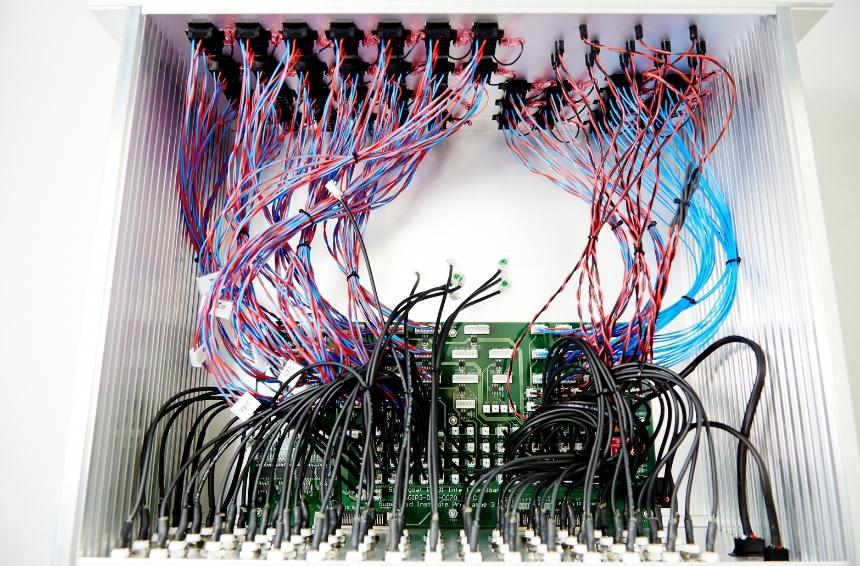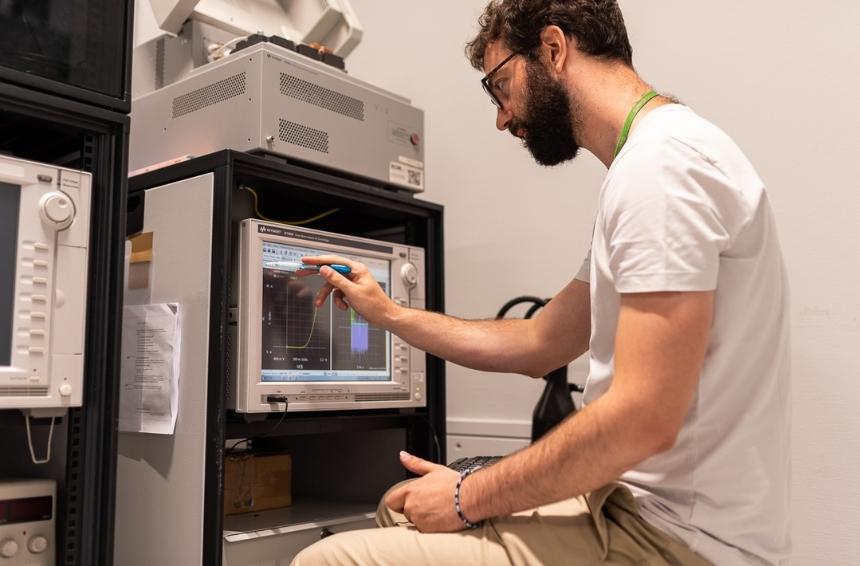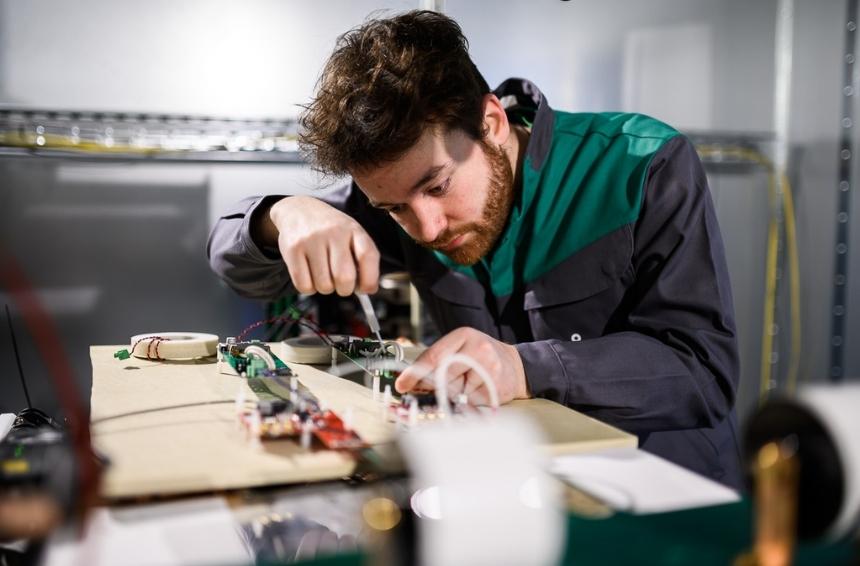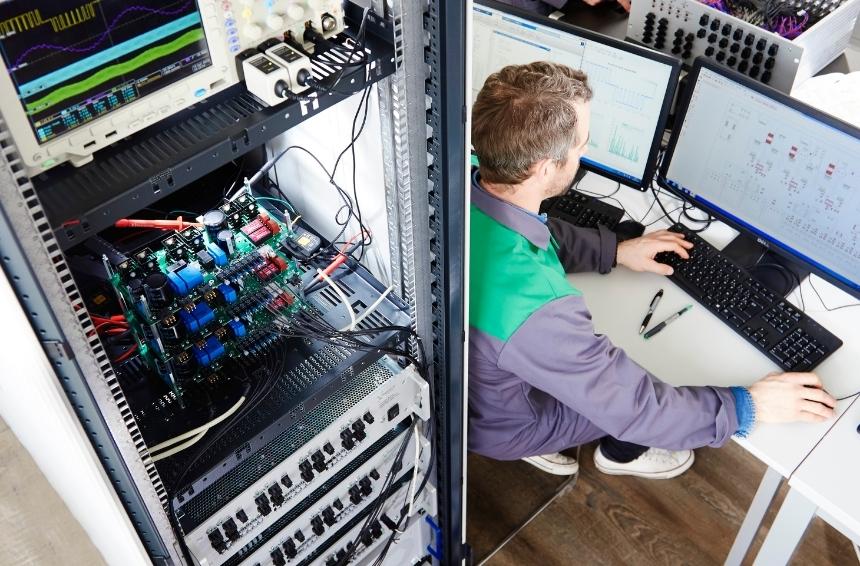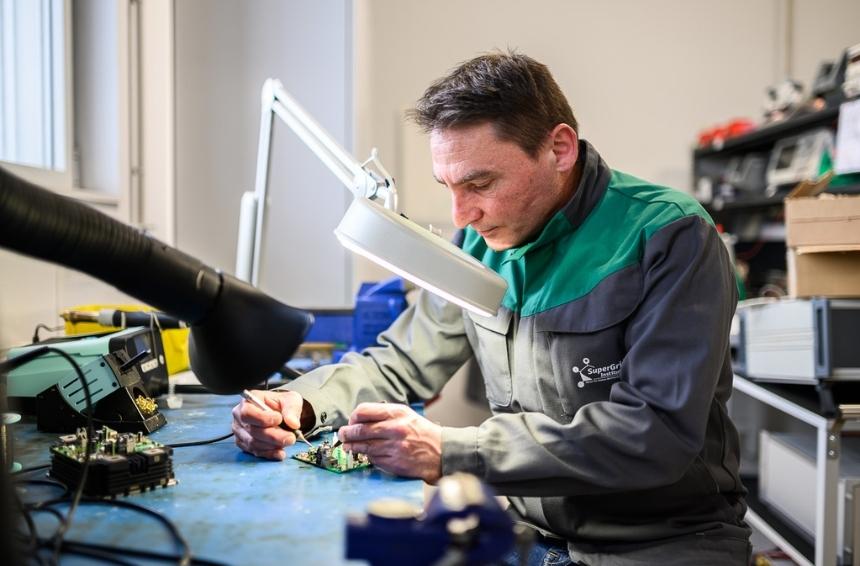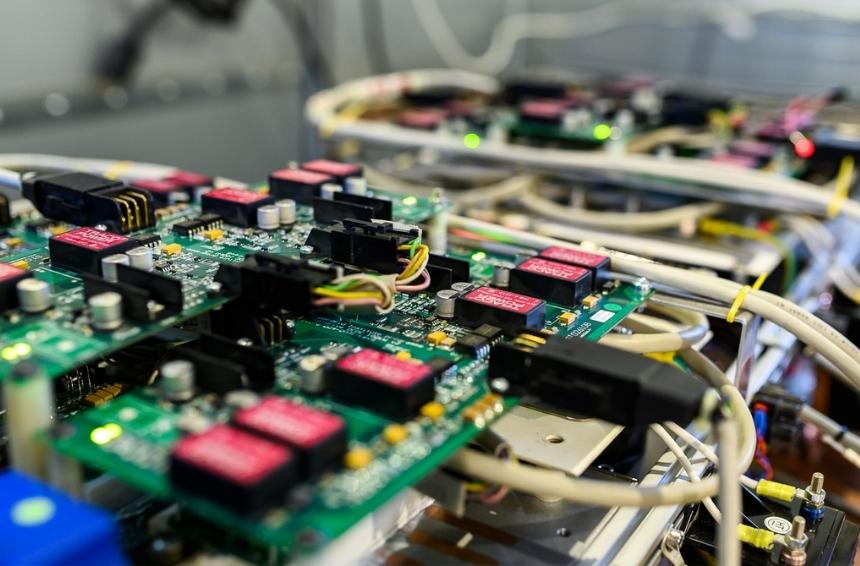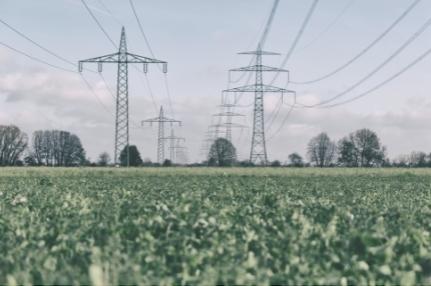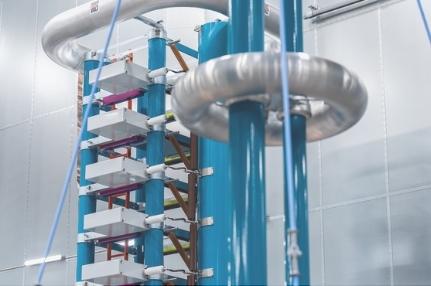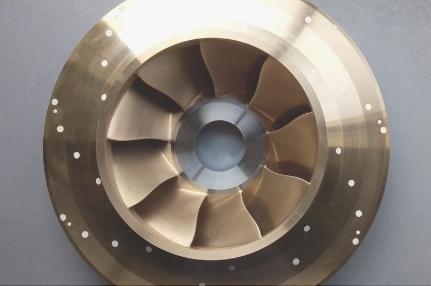Power Electronics & Converters

“Power Electronics is paving the way for the future global electrical grid. At SuperGrid Institute, we develop innovative technologies that are reliable, efficient and cost-effective to bring this network of electricity to life.”
Loïc Leclere, Department Director – Power Electronics & Converters
The Power Electronics and Converters department develops innovative power conversion solutions for HVDC and MVDC applications. In HVDC we focus on solutions for electricity transmission networks covering AC/DC and DC/DC converters, large buffer storage systems, and power flow controllers. In MVDC we study and develop technologies for distribution networks, with a focus on protection, DC/DC converters, and energy storage systems.
The department conducts research on topologies and controls for power converters and their associated technologies, such as medium frequency transformers, silicon carbide (SiC) components and switching cells. Other research topics include condition and health monitoring, as well as digital twin modelling applied to power converters.
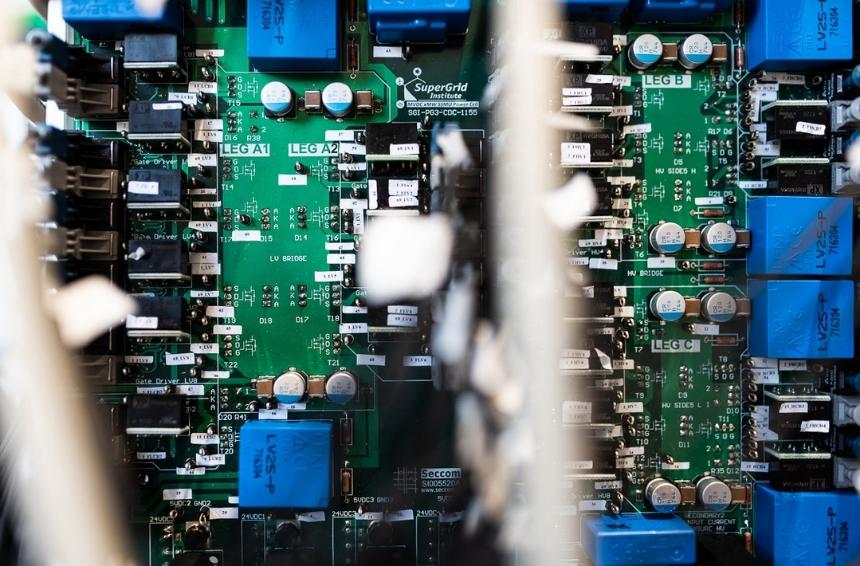
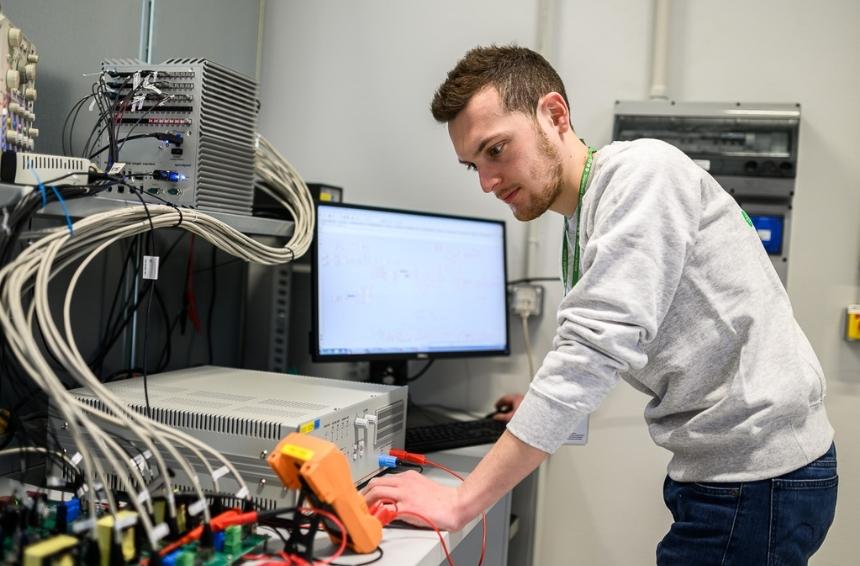
Advanced testing facilities enable us to perform full characterisation tests on power components up to many kVolts and kAmps, as well as back-to-back converter testing combined with a 100 kW deionised water cooling heat exchanger.
Our research includes:
Recent publications
Join us at CIGRE 2024: The leading global event for power system expertise!
Join us at CIGRE 2024 in Paris from August 25-30 to explore the latest in power system expertise. Visit us at stand no. 265 to discover innovative solutions for DC power grids, including our HyBreak MVDC Circuit Breaker and Superconductive Fault Current Limiter. Participate in our HVDC grid quiz, attend our expert presentations, and learn about groundbreaking technologies that enhance reliability and resilience in transmission & distribution systems.
Impact of renewable energy generation on power reserve energy demand
This work focuses on analysing the relationship between reserve energy demand and load, wind, and solar generation.
Superconducting Cable Modelling into Electro-Magnetic Transient Simulation
The European project SCARLET aims to study and realize a demonstrator of a MVDC high-power superconducting cable.


